Springfield Armory 1911 5" .45ACP Stainless Steel Full Size PB9151LP For Sale
$674.99
The Springfield Armory 1911 5″ .45ACP Stainless Steel Full Size, model PB9151LP, is a modernized version of the classic G.I. design, blending historical functionality with contemporary enhancements. Recognized by UPC 0706397866730, this Mil-Spec firearm features high-profile 3-Dot sights for improved accuracy, a high-hand grip for better control, and a beveled magazine well for quicker reloads. It also includes a polished feed ramp and throated barrel for reliable feeding, as well as a lower and flared ejection port and angled slide serrations for smoother operation and maintenance. This stainless-steel pistol, with its combination of traditional style and modern tactical features, is well-suited for both enthusiasts and professionals.
Why do 1911s jam so much?
The 1911 pistol can experience jamming for several reasons, and understanding these can help in preventing or minimizing malfunctions:
1. **Magazine Issues**: The 1911 design heavily relies on the magazine. Faulty magazines, whether due to poor manufacturing, wear and tear, or improper spring tension, can lead to feeding issues.
2. **Ammunition**: The 1911, originally designed for military ball ammunition, can be finicky with different types of modern ammo, especially those with different bullet shapes or pressures.
3. **Tolerance and Fit**: Some 1911s have very tight tolerances which can lead to reliability issues if not maintained properly or if debris builds up. Conversely, older or lower-quality models might have loose tolerances leading to inconsistent cycling.
4. **Maintenance and Lubrication**: Like any mechanical object, a 1911 needs proper cleaning and lubrication. Accumulation of dirt, powder residue, or lack of lubrication can cause operational failures.
5. **Extractor Tension**: The extractor needs to be properly tuned to ensure reliable ejection. Incorrect extractor tension can cause extraction and ejection failures.
6. **Shooting Technique**: Limp-wristing or incorrect handling can cause feeding and extraction issues, as the 1911 requires a firm grip to function properly.
7. **Aftermarket Parts**: Many owners modify their 1911s, sometimes leading to compatibility or quality issues, especially if the parts are not fitted correctly.
Regular maintenance, using quality magazines and ammunition, and proper handling can help reduce the likelihood of jams in 1911 pistols.
What 1911 did Chris Kyle use?
Chris Kyle used a Springfield Armory TRP (Tactical Response Pistol) Operator 1911 in .45 ACP.
Is a 1911 better than a Glock?
The answer to whether a 1911 is better than a Glock depends on a variety of factors such as personal preferences, the intended use, and specific criteria for what you consider “better.” Here are some considerations:
1. **Design and Heritage:**
– *1911:* Known for its classic design and history, the 1911 has a single-action trigger and is renowned for its accuracy and ergonomics. It’s often favored by enthusiasts of military history and traditional firearms.
– *Glock:* Known for its simplicity, reliability, and ease of use, Glocks are striker-fired and have a reputation for being durable and functional in various conditions.
2. **Ergonomics and Comfort:**
– *1911:* Offers a slim profile with a single-stack magazine, generally accommodating smaller hands well.
– *Glock:* Typically has a bulkier feel due to double-stack magazines but offers a higher capacity as a result.
3. **Capacity:**
– *1911:* Generally has a lower capacity, often around 7-8 rounds in .45 ACP, though there are variations that offer more.
– *Glock:* Offers higher capacities with most models, such as the Glock 17 holding 17 rounds in 9mm.
4. **Maintenance and Reliability:**
– *1911:* May require more maintenance and can be more finicky with certain ammunition types but offers excellent performance when properly maintained.
– *Glock:* Known for being low-maintenance and highly reliable even with minimal cleaning.
5. **Intended Use:**
– *1911:* Often chosen for target shooting, competition, or as a collector’s piece.
– *Glock:* Popular for self-defense, law enforcement, and general-purpose shooting due to its reliability and capacity.
In summary, neither is categorically better than the other; it depends on what you’re looking for in a firearm. Users who appreciate classic, historical designs may prefer the 1911, while those who prioritize modern reliability and capacity may lean towards a Glock.
What is the weakness of the 1911?
The 1911 pistol, while highly regarded, has a few weaknesses:
1. **Weight and Capacity**: The full-size 1911 is relatively heavy, with a standard magazine capacity of only 7-8 rounds, which is less than many modern pistols.
2. **Complexity and Maintenance**: The 1911 has more parts and requires more maintenance and precise fitting than many contemporary pistols, which can affect reliability without proper care.
3. **Ergonomics and Sights**: Some users find the grip angle and old-style sights less ergonomic or harder to use compared to modern designs, which often have better ergonomics and sight options.
4. **Sensitivity to Ammunition**: Some 1911 models can be finicky with certain types of ammunition, especially hollow points, due to feed ramp design and magazine issues.
5. **Custom Tuning Needs**: Out-of-the-box performance may require tuning or customization for optimal performance and reliability, adding to cost and time.
These factors can influence the choice for or against a 1911 depending on the user’s needs and preferences.
What pistol is known for jamming?
The early models of the Colt M1911 were known for having jamming issues, particularly if they were not properly maintained or if low-quality ammunition was used. Additionally, the early versions of the Beretta M9 (the military version of the Beretta 92) had some reports of jamming, particularly under strenuous conditions. However, these issues were often addressed in later models through design improvements and better maintenance protocols.
What is the most common problem with the 1911?
The most common problem with a 1911 pistol tends to be failure to feed or failure to eject, often referred to as “stovepiping.” These issues can arise due to a variety of factors, such as improper maintenance, ammunition issues, or problems with the magazine or extractor. Regular cleaning and using high-quality magazines and ammunition can often help mitigate these issues.
What 1911 does the FBI use?
The FBI uses a custom version of the 1911 pistol known as the Springfield Professional Model. This firearm is manufactured by Springfield Armory and was specifically designed to meet the rigorous standards required by the FBI’s Hostage Rescue Team and SWAT units.
What caliber did Chris Kyle make his longest shot with?
Chris Kyle made his longest shot with a .338 Lapua Magnum rifle.
Did Chris Kyle shoot a sniper?
Yes, Chris Kyle, the former Navy SEAL and author of “American Sniper,” was involved in combat situations where he engaged and shot enemy snipers during his military service.
Are 1911s high maintenance?
1911s, particularly classic models, can require more maintenance compared to some modern handguns. They have a reputation for needing regular cleaning, lubrication, and occasional part adjustments to ensure reliability and performance. Proper maintenance is crucial, especially for those used in competitive shooting or as carry weapons. However, many enthusiasts appreciate the care involved as part of the 1911 experience.
Is a striker fired better than a 1911?
The question of whether a striker-fired pistol is better than a 1911 (which is typically hammer-fired) depends on several factors, including personal preference, intended use, and specific features. Here are some considerations:
1. **Trigger Mechanism**:
– Striker-fired guns generally have a consistent trigger pull, which some shooters prefer for simplicity and ease of use, especially in defensive scenarios.
– The 1911 offers a single-action trigger that is often considered crisp and precise, which is favored by many enthusiasts for target shooting and competition.
2. **Safety**:
– Striker-fired pistols often have internal safeties and may or may not have an external manual safety lever.
– The 1911 traditionally has a frame-mounted manual safety and a grip safety, offering multiple layers of safety but requiring more manipulation.
3. **Customization and Ergonomics**:
– Many 1911 models offer extensive options for customization regarding grips, triggers, and other components.
– Striker-fired pistols are typically less customizable but offer varied ergonomic designs and grip textures to suit different hand sizes.
4. **Size and Weight**:
– 1911s are often heavier and may be less suitable for concealed carry, whereas striker-fired pistols come in various sizes, including compact versions ideal for carry.
5. **Capacity**:
– Modern striker-fired pistols usually have higher magazine capacities compared to traditional 1911s.
Ultimately, the “better” choice depends on the shooter’s needs, such as carrying preferences, comfort with safety features, and the specific application like self-defense, competition, or target shooting. It is recommended to try both types to see which feels more comfortable and suitable for your purpose.
What pistol do Navy SEALs prefer?
Navy SEALs prefer the SIG Sauer P226 for their standard sidearm, although they have also used the Glock 19 in certain operations.
What not to do with a 1911?
When handling a 1911 handgun, here are some things you should avoid:
1. **Neglect Regular Maintenance:** Ensure regular cleaning and maintenance of the firearm to prevent malfunctions.
2. **Use Incorrect Ammunition:** Always use the appropriate caliber ammunition specified by the manufacturer.
3. **Modify Without Expertise:** Avoid making unauthorized modifications or using aftermarket parts unless you are skilled or consult a professional gunsmith.
4. **Ignore Safety Protocols:** Do not disregard basic gun safety rules, such as keeping the firearm pointed in a safe direction and keeping your finger off the trigger until ready to fire.
5. **Disassemble Carelessly:** Avoid improper disassembly or reassembly, which can damage the firearm or affect its function.
6. **Assume It’s Unloaded:** Always treat the firearm as if it is loaded and perform safety checks to confirm its status.
7. **Store Improperly:** Do not leave the firearm in a place where unauthorized or untrained individuals, especially children, can access it.
8. **Shoot Without Proper Training:** Ensure you have the necessary training and understanding to safely operate the firearm.
By following these guidelines, you can maintain the integrity of your 1911 and ensure safe handling.
What is the most accurate 1911?
The most accurate 1911 is often subjective and depends on individual preferences, purposes, and experiences. However, some of the most highly regarded and consistently praised models for accuracy include:
1. **Wilson Combat Supergrade** – Known for exceptional craftsmanship and precision.
2. **Nighthawk Custom GRP** – Offers a high level of customization and performance.
3. **Les Baer Premier II** – Renowned for its tight fit and accuracy.
4. **Ed Brown Executive Elite** – Combines high-quality materials with precise engineering.
These handguns are typically custom-built or semi-custom, offering superior accuracy due to precise manufacturing and hand fitting. Keep in mind that individual experiences can vary, so it’s often recommended to try different models if possible.
Why did the US stop using the 1911?
The United States military began phasing out the M1911 pistol primarily due to the need for a more modern, higher-capacity sidearm to meet evolving combat requirements. Introduced in 1911, the M1911 served extensively through both World Wars, the Korean War, and the Vietnam War. However, by the 1980s, the military sought a replacement that addressed several considerations:
1. **Standardization with NATO Allies**: The military desired a sidearm chambered in 9mm to standardize ammunition with other NATO countries.
2. **Increased Magazine Capacity**: The M1911 had a 7-round magazine, whereas newer designs offered higher capacities for increased firepower.
3. **Reliability and Durability**: Newer pistols offered improvements in reliability, durability, and ease of maintenance.
4. **Advancements in Firearm Technology**: Developments in handgun technology since the M1911’s design provided opportunities for enhancements in performance and ergonomics.
As a result, in 1985, the Beretta M9 was adopted as the standard sidearm, marking the transition from the M1911. Despite this, the M1911 remains in service in some specialized units and is still highly regarded for its design and history.
Be the first to review “Springfield Armory 1911 5" .45ACP Stainless Steel Full Size PB9151LP” Cancel reply
Related products
Springfield Armory 1911
Springfield Armory 1911 .45 ACP Mil-Spec Parkerized Handgun – PB9108LP
Springfield Armory 1911
Springfield Armory 1911 45ACP 4" LightWeight Champion Operator PX9115LP
Springfield Armory 1911
Springfield Armory 1911 45ACP 4" LightWeight Champion Operator PX9115LP
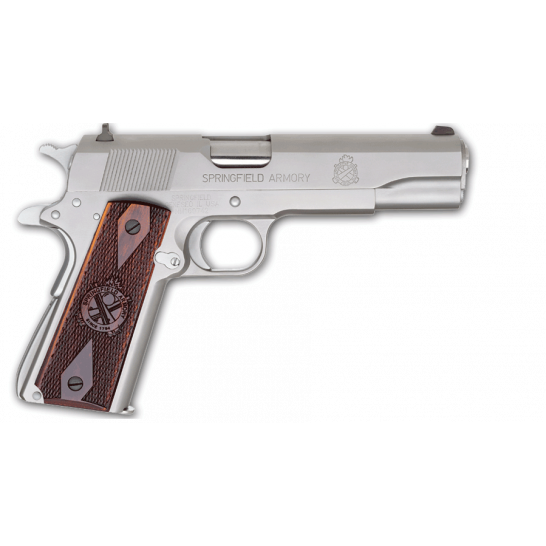
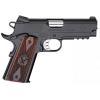
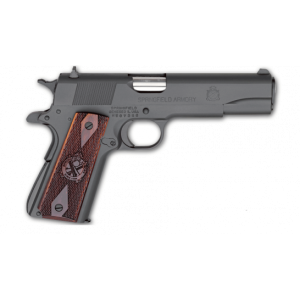
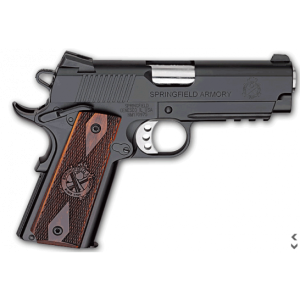
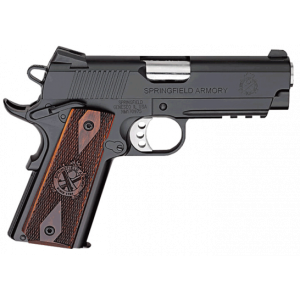
Reviews
There are no reviews yet.